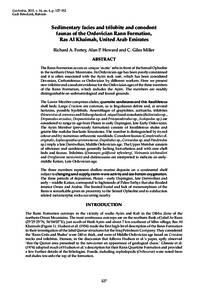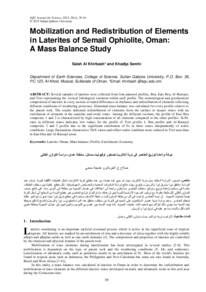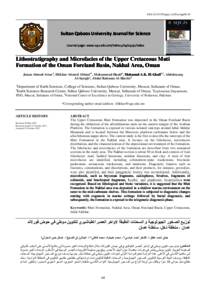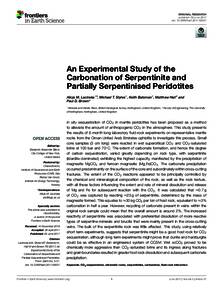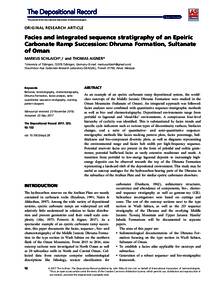Document
Sedimentary facies and trilobite and conodont faunas of the ordovician rann formation, Ras Al Khaimah, United Arab Emirates.
Identifier
DOI: 10.2113/geoarabia1604127
Contributors
Heward, Alan P., Author
Miller, C. Giles., Author
Publisher
Gulf Petrolink.
Gregorian
2011-10
Language
English
Subject
English abstract
The Rann Formation occurs as unique exotic rafts in front of the Semail Ophiolite in the northern Oman Mountains. Its Ordovician age has been poorly constrained and it is often associated with the Ayim rock unit, which has been considered Devonian, Carboniferous or Ordovician by different workers. Here we present new trilobite and conodont evidence for the Ordovician ages of the three members of the Rann Formation, which includes the Ayim. The members are readily distinguishable on sedimentological and faunal grounds. The Lower Member comprises shales, quartzitic sandstones and thin fossiliferous shell beds. Large Cruziana are common, as is lingulacean debris and, at several horizons, possible hyolithids. Assemblages of graptolites, acritarchs, trilobites (Neseuretus cf. arenosus and Taihungshania cf. miqueli) and conodonts (Baltoniodus sp., Drepanodus arcuatus, Drepanoistodus sp. and Protopanderodus sp., Scolopodus sp.) are considered to range in age from Floian to early Dapingian, late Early Ordovician. The Ayim Member (previously formation) consists of fossiliferous shales and griotte-like nodular bioclastic limestones. The member is distinguished by its red colour and by numerous orthoconic nautiloids. Conodont faunas (Complexodus cf. originalis, Eoplacognathus protoramosus, Dapsilodus sp., Cornuodus sp. and Panderodus sp.) imply a late Darriwilian, Middle Ordovician age. The Upper Member consists of siltstones and sandstones generally lacking bioturbation and with rare shell beds and faunas. Trilobites (Deanaspis goldfussii seftenbergi, Vietnamia teichmulleri and Dreyfussina taouzensis) and chitinozoans are interpreted to indicate an earlymiddle Katian, Late Ordovician age. The three members represent shallow-marine deposits on a continental shelf subject to changing sand supply, storm-wave activity and sea-bottom oxygenation. The three periods of deposition, Floian - early Dapingian, late Darriwilian and early - middle Katian, correspond to highstands of Paleo-Tethys that also flooded interior Oman and Arabia. The limited burial and lack of metamorphism of the Rann is remarkable given its proximity to the Semail Ophiolite and to subduction related metamorphic rocks occurring nearby.
Member of
ISSN
1025-6059
Resource URL
Category
Journal articles

